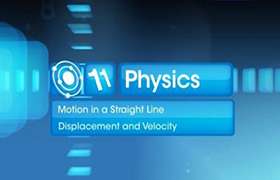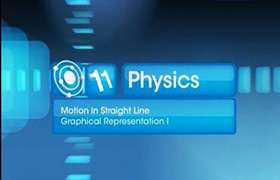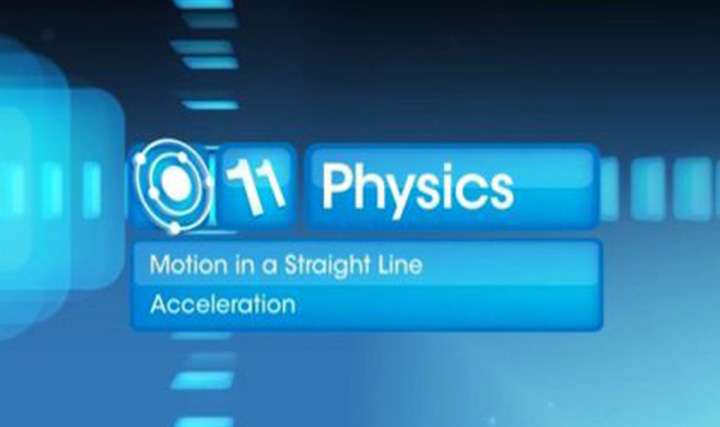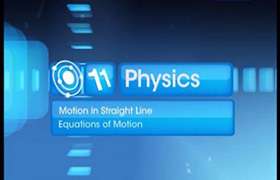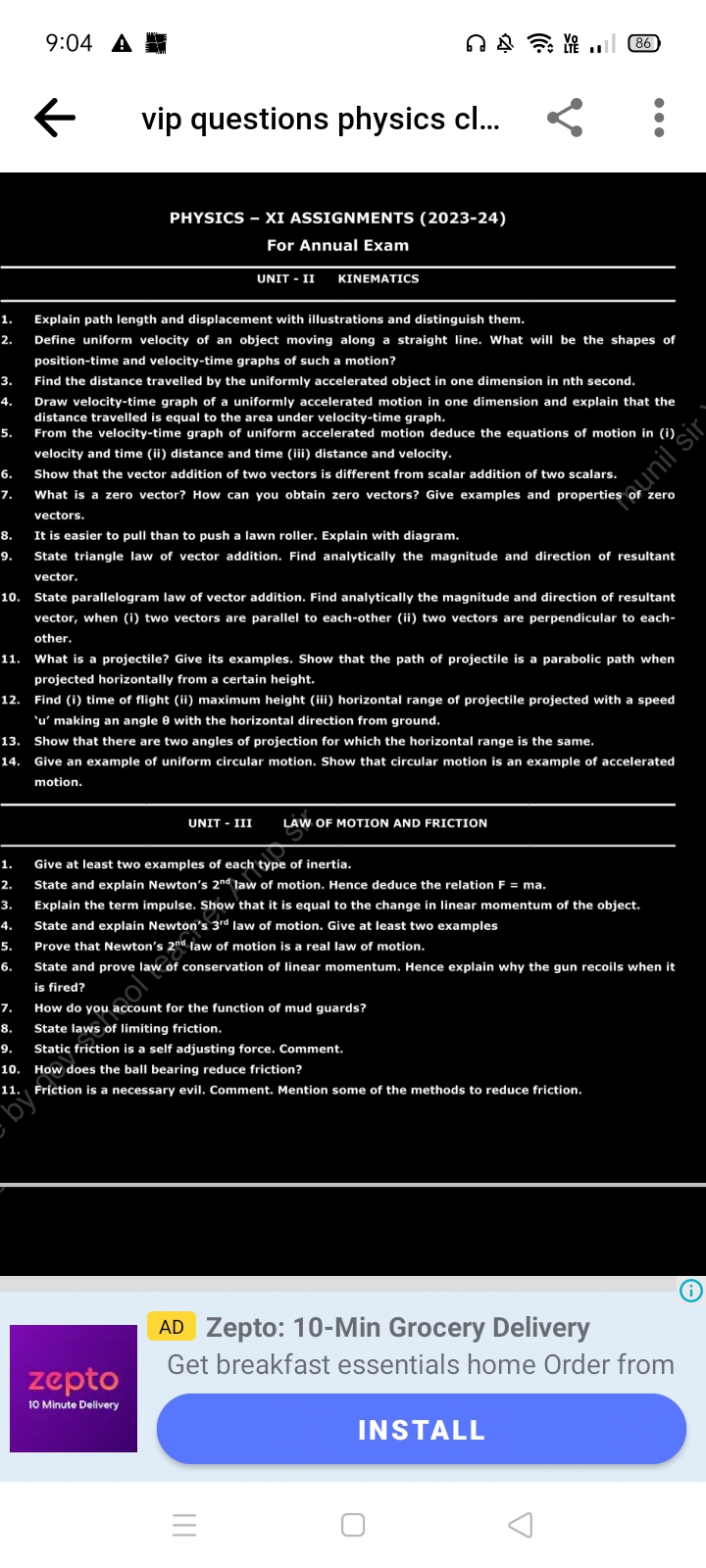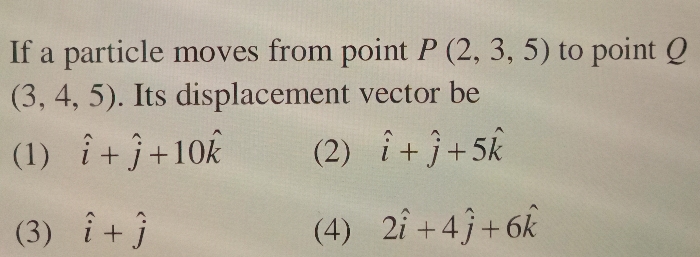CBSE Class 11-science Answered
We can also study about uniformly accelerated motion by plotting its velocity time graph. Consider a car being driven along a straight road for testing its engine. Suppose a person sitting next to the driver records its velocity after every 5 seconds by noting the reading of the speedometer of the car. The velocity of the car, in km h-1 as well as in m s-1, at different instants of time is shown in table.

In this case, the velocity-time graph for the motion of the car is shown in Fig. 6. The nature of the graph shows that velocity changes by equal amounts in equal intervals of time. Thus, for all uniformly accelerated motion, the velocity-time graph is a straight line.

In the case of non-uniformly accelerated motion, velocity-time graphs can have any shape. Also, if the velocity of a car is decreasing with time, i.e. it is undergoing retardation, then the slope of the v-t graph would be negative.

Fig. 7(a) shows a velocity-time graph that represents the motion of an object whose velocity is decreasing with time while Fig. 7 (b) shows the velocity-time graph representing the non-uniform variation of velocity of the object with time.

